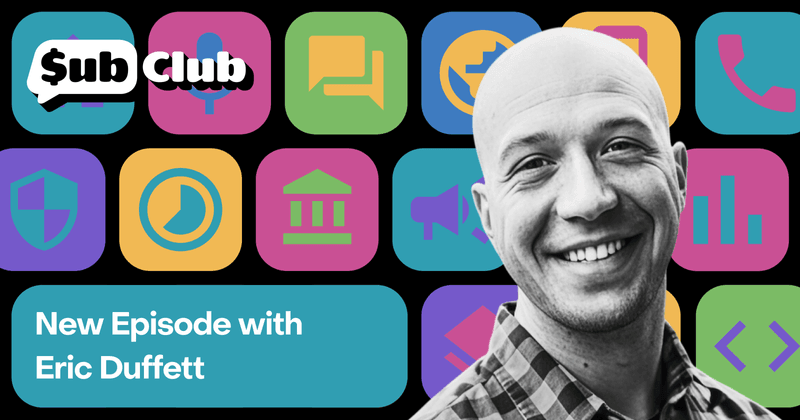We all know the saying: “If at first you don’t succeed, try, try again.” But this doesn’t always mean you should keep doing the same thing and hope your determination will eventually pay off — sometimes you have to give up on a bad idea and move on to a better one in order to find the success you’re looking for.
That’s exactly what happened for Eric Duffet, a high school teacher and indie app developer who created the golf GPS app Shot Pattern. For Eric, the road to success wasn’t a straight line (not by a long shot). We recently hosted Eric on the Sub Club podcast, where he shared all the ups and downs of his journey as a one-man-show indie app developer.
A lesson in product-market fit
Like a lot of indie developers, Eric started coding as a hobby. As a high school teacher and golf coach, Eric was first inspired to build an app when he noticed his students struggling with the combined pressures of homework, athletics, and applying for college scholarships. “I felt like they needed something to deal with the adversity they were facing in their sport… so I thought … ‘I want to build something that can help you perform better, build resilience, and build some mental hygiene.’ And so I started creating that app for them.” Eric took a Udemy course on app development and eventually launched Undaunted Golf, a meditation app for golfers.
But what happened next is what Eric describes as “a lesson in what product-market fit isn’t.” After launching Undaunted Golf, it just didn’t take off the way he expected. The more he talked to users, the more he heard that folks weren’t particularly interested in the product. After five years of working on the app, he decided to call it quits — and thought his career as an indie developer was over.
Taking another swing
But the story doesn’t end there. Through his experience with Undaunted Golf, Eric developed a love for building apps, eventually creating one for the high school where he works, doing some consulting work, and even applying for software developer jobs. Eventually, his love of golf inspired him to start another pet project: a golf GPS app he built to make it easier to judge golf course distances and aim his swings effectively. Eric originally built the app for himself, but after hearing lots of chatter in the golf community about how GPS can help golfers improve their game, he launched Shot Pattern on the App Store hoping to passively earn $1,000/month or so to pay for his hobby.
And this time, things were different. Almost immediately, Eric saw promising signs of adoption. “I didn’t have to work that hard to get the first downloads, to see early signs of monetization,” Eric said. “One of the best signs that something was working was that people were paying for it that I never heard from … I was like, ‘This is not the same as before. This is working.’” Without realizing it, Eric had filled a growing need in the golf world. Hobbyists and pros were already measuring golf course distances by hand with Google Maps — Shot Pattern just made it easier to do. As Eric put it, “[Instead of] me trying to force a new behavior upon people, [I was] just giving them an easier way to do what they already wanted to.”
Bye, bye, birdie?
Four months after releasing the app, Eric received an offer from a company interested in buying Shot Pattern for $75,000. So he had a choice to make: take a $75,000 windfall or bet on the future success of his app and keep building. Unsure of what to do, Eric reached out to a few subscription app experts and the RevenueCat community asking for advice. At the same time, Eric compared some of his app’s early performance data to the latest subscription app benchmarks and was able to determine a rough valuation for his business. He turned down the acquisition offer and kept building.
The bet paid off. After Eric implemented a scrappy, video-based content marketing strategy, Shot Pattern kept doing better and better — ultimately bringing in $185,000 in revenue in 2024.
What Shot Pattern’s story shows
Eric’s story just goes to show that product-market fit is about finding some kind of pull in the market, not trying to push a solution onto users that they might not really want or need. No matter how great you think your app idea is, sometimes there just isn’t enough demand in the market to justify building it. So take it from Eric: don’t spend five years working on an app that’s never going to pay off. Move on to your next great idea — it could be the one that takes off.

